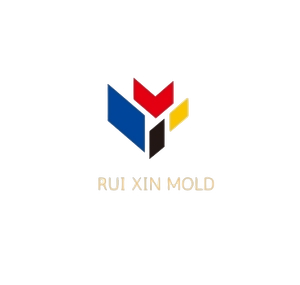Categories
Recent Posts
Tags
Mold Base Parts: Functions and Design Guide
Mold base parts are the backbone of any injection molding process. They ensure precision, durability, and efficiency in producing high-quality plastic parts. In this guide, we’ll explore the key components of a mold base, their functions, and how to optimize their design for better performance.
A mold plate is any plate required to built a complete mold, in all plate use for molds have the main requirements, they are :
- Good corrosion resistant
- Good Machinability.
- Easy to clean
- Good heat transfer.
- Homogeneity of steel.
- Easy ability.
- Low Cost

explanation below based on number at those picture
at picture below you can see 3 plate mold base type with closed position, basically 3 plate type and 2 plate type has some main plate, see explanation about mold construction type to understand more.
Fixed Clamping Plate or Top Plate
Holds The fixed side of the mold to attached at the fixed platen of the injection machine. at this plate will attach locating ring, eye bolt, and sprue bush.
Runner Stripper Plate
this plate only used in 3 plate molds type, the function is to cut resin from nozzle in top of sprue bush, and pull the runner by runner locking pin.
Fixed Mold Plate or Cavity plate.
use to hold cavity side of product, leader pin, support pin, Puller bolts, and Angular pin when slider attached.
Movable Cavity Plate or Cavity plate
it used to attach core side of product, return pin, leader bush and slider core if needed.
Back up Plate or Support plate
used to support cavity plate, attach the hole for return pin’s spring, and cooling channel when in cavity plate can not make it.
Spacer Block
Mounted between the movable clamping plate (bottom plate) and the movable cavity plate to give space and allow the ejector plate to move when ejecting the
Ejector retainer plate
to hold the ejector, Z pin, shoulder bolts,and give space to ejector leader pin and support pillar.
Ejector Plate
Pushes the ejector pins and return pins, connected with ejector rods.
Movable Clamping Plate or Bottom plate
Holds The movable side of the mold like spacer block, support plate, cavity plate and ejector mechanism to the movable platen of the injection machine.
and look at picture below, shown 3 plate molds type in opening position, but at picture below, Bottom plate or movable clamping plate is number 7, number 8 is ejector retainer plate, and number 9 is ejector plate

Common Issues with Mold Base Parts
Mold base parts are critical to the injection molding process, but they can face several issues over time. Here are some common problems and how to address them:
Misalignment
Cause: Improper assembly or wear and tear on guide pins and bushings.
Solution: Regularly inspect and replace worn-out components. Use high-quality materials for guide pins and bushings to ensure longevity.
Wear and Tear
Cause: Frequent use, friction, or exposure to high temperatures.
Solution: Use durable materials like hardened steel for mold base parts. Implement a maintenance schedule to replace parts before they fail.
Cooling Inefficiencies
Cause: Blocked or poorly designed cooling channels.
Solution: Optimize cooling channel design to ensure even heat distribution. Regularly clean cooling channels to prevent blockages.
Part Sticking
Cause: Insufficient draft angles or improper ejection mechanisms.
Solution: Design parts with adequate draft angles and ensure ejector pins are functioning correctly.
FAQ
Q1: What is the most important part of a mold base?
A: The cavity and core are the most critical parts, as they shape the final product. However, all components (ejector pins, cooling channels, etc.) play a vital role in ensuring quality and efficiency.
Q2: How often should mold base parts be maintained?
A: Maintenance frequency depends on usage, but a general rule is to inspect mold base parts every 3-6 months and replace worn-out components as needed.
Q3: Can I use the same mold base for different parts?
A: While some mold bases are modular and can be adapted for different parts, it’s generally better to use a custom mold base for each part to ensure optimal performance.
Q4: What materials are best for mold base parts?
A: Hardened steel and aluminum are the most common materials due to their durability, precision, and resistance to wear and tear.
Q5: How can I improve the lifespan of my mold base?
A: Regular maintenance, proper cooling, and using high-quality materials can significantly extend the lifespan of your mold base.
